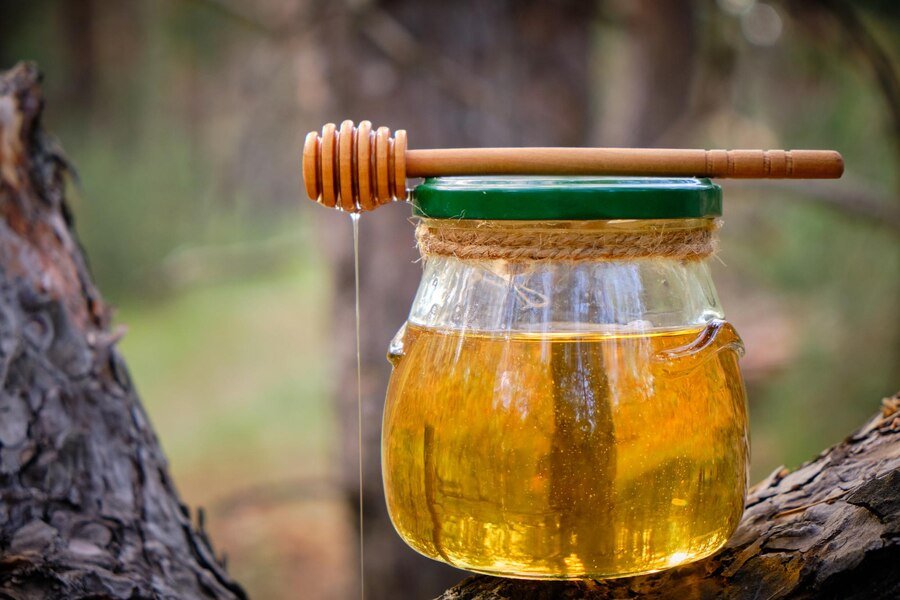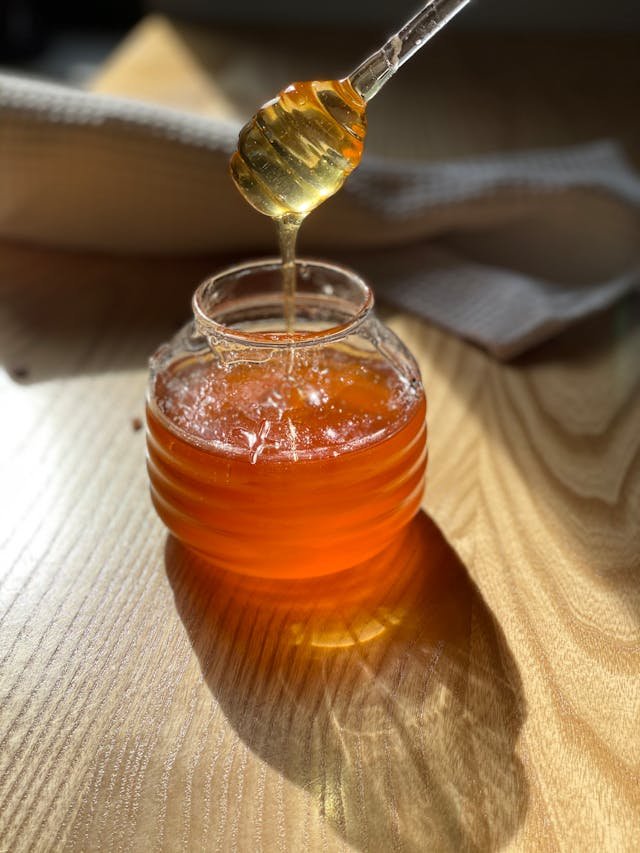Discover the unparalleled benefits of Amazon Rainforest Honey. read around its alone look and health benefits. Discover how to source this rare sustainable honey to help the environment and local communities.
Introduction : The Wonders of Amazon Rainforest Honey
Most people picture a jar of golden, viscous honey from the grocery store. But, a rare and exceptional honey exists. It carries the essence of the Amazon rainforest, one of the world’s most diverse ecosystems. This is Amazon Rainforest Honey. It is not just from bees. It is from an entire ecosystem’s worth of flora. Nature’s tiny, tireless workers, the bees, carefully curated it.
Amazon Rainforest Honey is more than just a sweetener. It reflects the Amazon rainforest’s rich biodiversity. Bees forage on many plants. Each plant adds to the honey’s unique flavor, texture, and health benefits. This article will explore what makes Amazon Rainforest Honey unique. We’ll cover its complex harvest, its types, and its benefits to health and the environment. By the end, you’ll know why Amazon Rainforest Honey is a must-try for any honey lover. You’ll also learn how it helps preserve a vital ecosystem.
What is Amazon Rainforest Honey?
Amazon Rainforest Honey is a rare honey. It comes from the dense, rich Amazon rainforest. The honey is from bees that gather nectar from unique plants. They are found nowhere else on Earth. This rare variety of nectar sources gives the honey a complex flavor. It also has a unique look that sets it apart from common honey.
The Unique Terroir of the Amazon Rainforest
The Amazon rainforest is often referred to as the “lungs of the Earth” due to its enormous types of trees that absorb carbon dioxide and produce oxygen. But beyond this critical ecological function, the rainforest is also a treasure trove of biodiversity. It has about 400 billion trees of 16,000 species. It also has countless other plants. Many of these help produce Amazon Rainforest Honey.
Terroir, often linked to wine, refers to the environment where a product is grown. It includes conditions like soil and climate. These affect the product’s traits. Amazon Rainforest Honey has a unique character. The rainforest’s terroir, or environment, gives it this quality. It comes from the plants that the bees visit, the time of year, and the weather.
Why is Amazon Rainforest Honey Special?
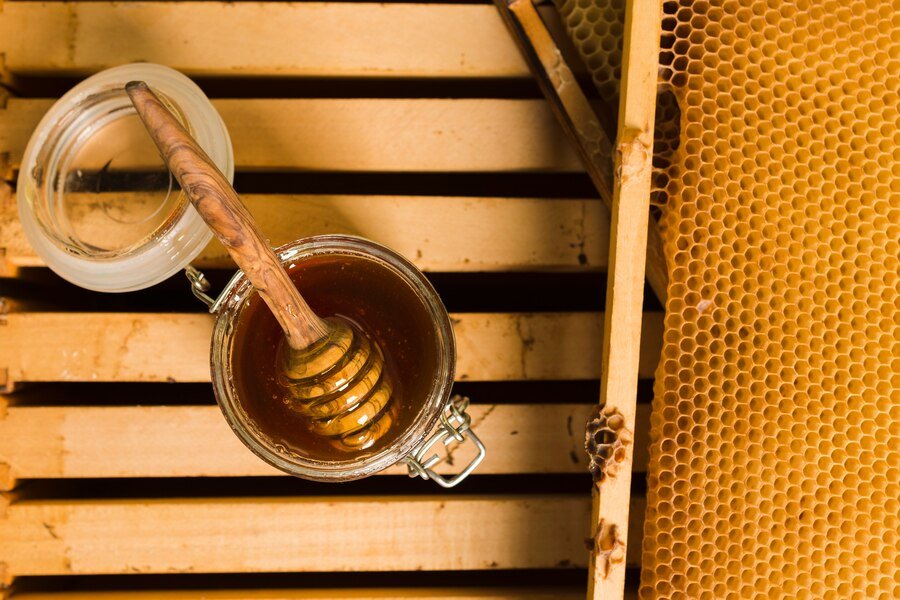
Amazon Rainforest Honey is special. Its origin and unique qualities make it popular with honey lovers and health fans. These qualities are its flavor, nutrient content, and role in sustainability.
- Unique Flavor Profile: A Symphony of Tastes
A striking feature of Amazon Rainforest Honey is its unique flavor. Amazon Rainforest Honey is polyfloral. It comes from many types of flowers, not just one like monofloral honeys. It comes from many types of flowers. The bees collect nectar from many different flowers. Each adds to the honey’s complex flavor.
Amazon Rainforest Honey can taste subtly floral to intensely fruity. It may also have herbal or spicy notes. The flavor of a batch of Amazon Rainforest Honey can vary. It depends on which plants were in bloom when the honey was harvested. For instance, honey from the açaí palm’s flowering season may have a rich, fruity undertone. Honey from areas with many Brazilian pepper trees may have a spicier, bolder flavor.
- Rich in Nutrients: A Natural Health Elixir
Beyond its delightful taste, Amazon Rainforest Honey is also a nutritional powerhouse. Like other high-quality honeys, it is rich in essential vitamins, minerals, and antioxidants. The Amazon rainforest has many plant species. This adds to a richer, more potent nutrient profile.
Amazon Rainforest Honey contains many vitamins, including B vitamins. These include B6, thiamin, niacin, and riboflavin. They are essential for energy and cellular health. It also has minerals like calcium, magnesium, and potassium. They are vital for bones, muscles, and a healthy heart. Also, the honey is rich in antioxidants. They neutralize destructive free radicals in the body. This decreases oxidative stress and lowers the risk of chronic diseases.
- A Source of Rare Bioactive Compounds
Amazon Rainforest Honey is unique. It has special bioactive compounds not found in other honeys. The Amazon rainforest has many plants. They produce secondary metabolites, which are chemicals that protect against pests and diseases. These compounds can have significant health benefits when consumed by humans.
Some varieties of Amazon Rainforest Honey have high flavonoid and phenolic acid levels. They have anti-inflammatory, antimicrobial, and anticancer properties. These compounds may help the honey soothe sore throats and boost immunity.
How is Amazon Rainforest Honey Harvested?
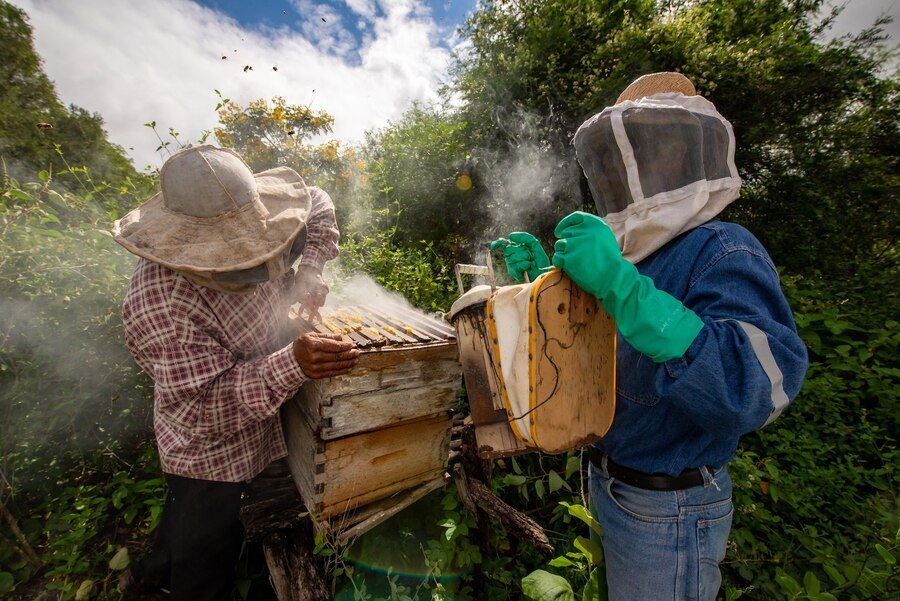
The process of harvesting Amazon Rainforest Honey is a careful one. It is rooted in tradition and sustainability. Beekeepers in the Amazon rainforest, often indigenous, use methods to collect honey. They are ancient, passed-down techniques. These methods minimize harm to the environment and the bees.
- Locating the Hives: A Deep Connection with Nature
Finding bee hives in the vast Amazon rainforest is no easy task. It requires a deep understanding of the local environment and the behavior of the bees. Beekeepers often rely on traditional knowledge to find wild hives. These may be high in trees or hidden in dense vegetation. In some cases, beekeepers use bee houses to attract and house bee colonies. These are specially designed boxes. These boxes are placed in areas with many flowering plants. This ensures the bees have enough food.
- The Harvesting Process: A Balance of Care and Precision
Once the hives have been located, the next step is to carefully collect the honey. This process is usually done by hand. Tools like smoke calm the bees and protect the beekeeper from stings. The honeycomb is then gently removed from the hive. This ensures the bees are not harmed and that enough honey is left to sustain the colony.
After the honeycomb is collected, the honey is extracted using traditional methods. The honey is often strained through a fine mesh. This removes debris, like bits of wax and pollen. It preserves the honey’s natural enzymes and nutrients. The result is a pure, unprocessed honey that retains all of its natural goodness.
- Filtering and Packaging: Maintaining Purity and Freshness
After extracting the honey, it is lightly filtered. This removes any remaining impurities but keeps its natural properties. Amazon Rainforest Honey is usually raw. In contrast, most commercial honeys are processed and pasteurized. It keeps all its natural enzymes, vitamins, and minerals. It also retains its unique flavor and aroma.
The honey is then carefully packaged in jars, often by hand. This ensures it stays fresh and uncontaminated. Each jar of Amazon Rainforest Honey connects you to the land and its people, who worked to bring it to your table.
Sustainability and Conservation: A Honey That Helps Protect the Rainforest
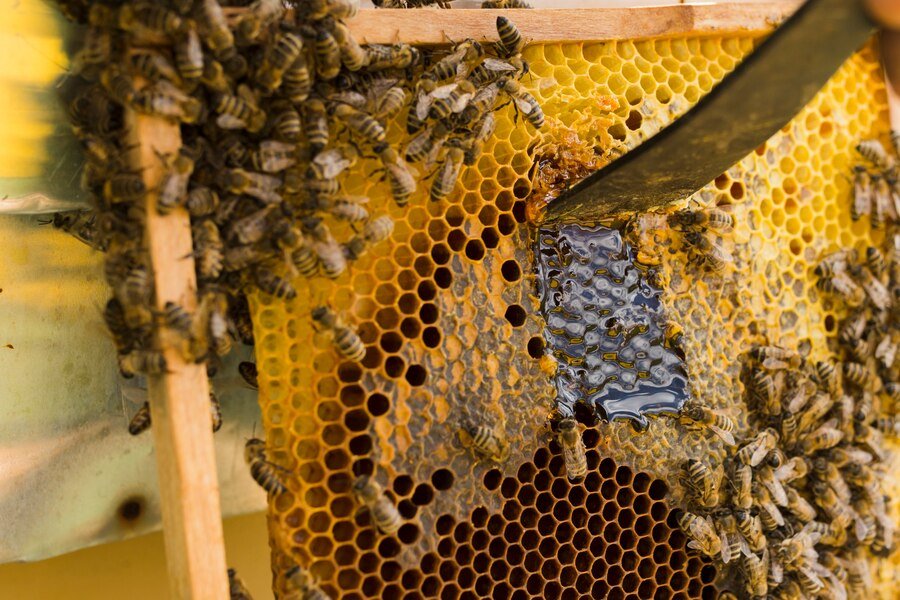
Choosing Amazon Rainforest Honey helps the environment and local communities. This honey supports efforts to conserve the Amazon rainforest and its people.
1. Protecting the Rainforest: Beekeeping as a Conservation Tool
Beekeeping in the Amazon rainforest does more than produce honey. It is also a powerful conservation tool. Beekeeping provides a sustainable income for local communities. It reduces the urge to log or use slash-and-burn farming, which harm the environment.
The presence of beekeepers in the rainforest helps the ecosystem. Bees play a essential role in pollination, which is important for the reproduction of many plants. Beekeeping helps the rainforest by boosting biodiversity. It fosters healthy bee populations.
- Supporting Local Communities: A Sustainable Livelihood
Many beekeepers of Amazon Rainforest Honey are from indigenous or local communities. They have lived in harmony with the rainforest for generations. Beekeeping provides these communities with a sustainable income. It helps them keep their traditions and boosts the global economy.
By buying Amazon Rainforest Honey, consumers support these communities. This helps create a reason to preserve the rainforest. It helps the environment. It also empowers locals and preserves their traditions for future generations.
Types of Amazon Rainforest Honey: A Spectrum of Flavors and Qualities
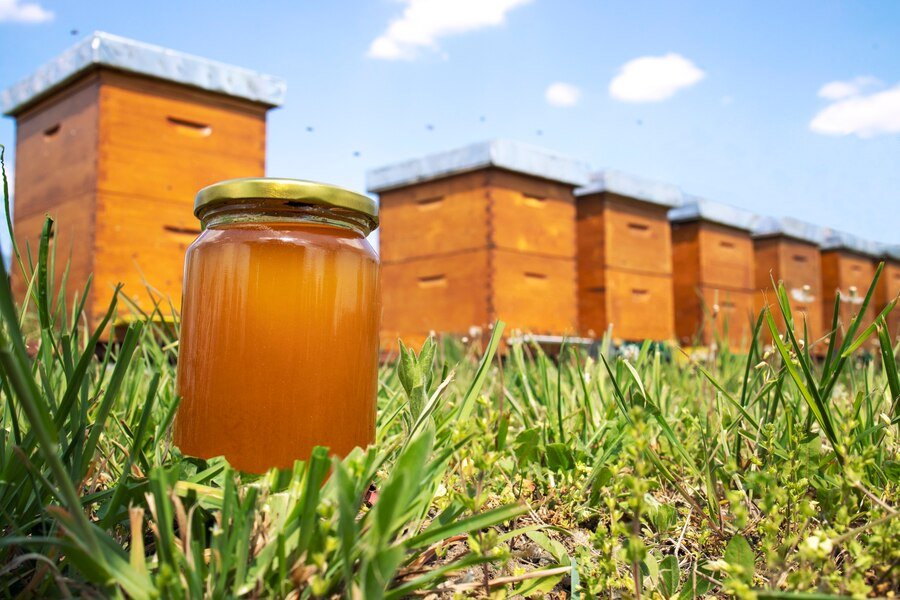
Amazon Rainforest Honey is not a single product. It includes many types of honey, each with its own unique traits. These differences mainly come from the plants that provide nectar to the bees. They also depend on the time of year and the hive locations.
Honey from the Açaí Palm: A Fruity Delight
The açaí palm (Euterpe oleracea) is a famous Amazon tree. Açaí berries, a superfood, made it popular. But the açaí palm also contributes to the production of a distinctive type of honey. Bees that collect nectar from the açaí palm’s small, purple flowers produce a honey with a rich, fruity flavor. It is often described as having notes of berries or dark fruit. This honey is typically dark in color, reflecting its deep, complex taste.
- Honey from the Brazilian Pepper Tree: A Spicy Sensation
Another popular type of Amazon Rainforest Honey is from the Brazilian pepper tree. Its scientific name is Schinus terebinthifolia. It has aromatic leaves and bright red berries. The honey from this tree’s nectar is bold, spicy, and golden. This honey is often used in cooking. Its strong flavor shines in marinades and glazes for roasted meats.
3. Honey from Wildflowers: A Floral Bouquet
Besides honey from specific trees, there is also a variety of Amazon Rainforest Honey. It is from the nectar of wildflowers. This type of honey tends to have a more delicate, floral flavor and a lighter color. Wildflower honey’s flavor can vary greatly. It depends on the mix of blooming flowers at collection time. This makes each batch unique.
Health Benefits of Amazon Rainforest Honey
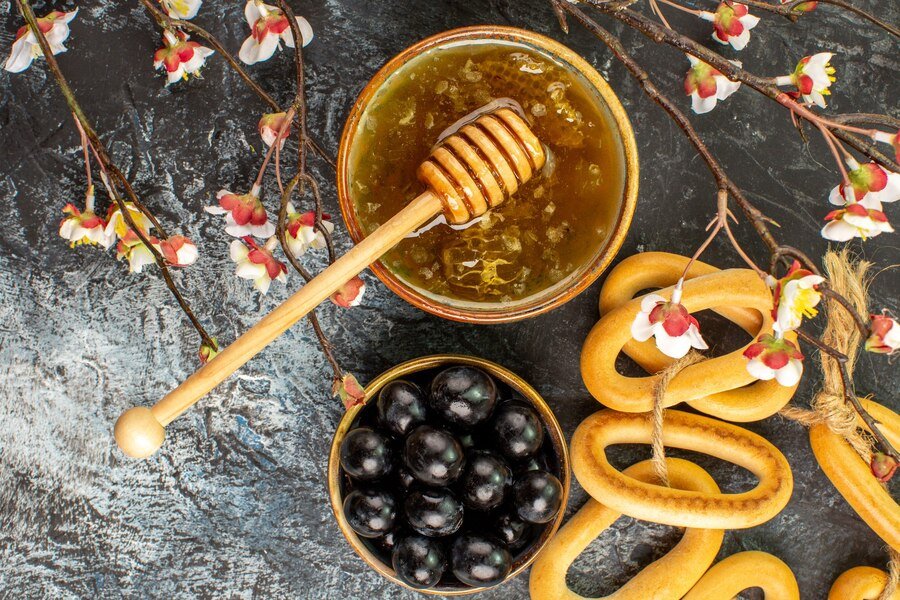
The benefits of Amazon Rainforest Honey extend far beyond its delicious taste. This honey is rich in nutrients and bioactive compounds. They can boost your health.
- Boosts Energy: A Natural Source of Vitality
Honey has long been valued as a natural source of energy, and Amazon Rainforest Honey is no exception. Honey’s natural sugars, mainly glucose and fructose, provide a quick, lasting energy boost. The body easily absorbs them. Amazon Rainforest Honey is perfect for athletes and busy professionals. It’s a natural pick-me-up for anyone needing a boost during the day.
Processed sugars can cause energy crashes. The sugars in Amazon Rainforest Honey are different. They come with vitamins, minerals, and enzymes. These help stabilize blood sugar and provide lasting energy. A spoonful of this honey in your morning tea or smoothie can help set the tone for a productive day.
- Soothes Sore Throats: Nature’s Cough Syrup
One of the most well-known uses of honey is as a natural remedy for sore throats and coughs. Amazon Rainforest Honey is great for this. It has antimicrobial properties and a soothing texture. When consumed, the honey coats the throat. It reduces irritation and coughs.
Amazon Rainforest Honey can soothe and kill germs. It can fight the bacteria and viruses that cause throat infections. For a natural remedy, mix a spoonful of honey with warm water, lemon, and ginger. This comforting drink can help ease symptoms and speed recovery.
- Rich in Antioxidants: A Defense Against Disease
Antioxidants are compounds that protect the body from oxidative stress. This process can damage cells. It can cause diseases like heart disease, cancer, and diabetes. Amazon Rainforest Honey is high in antioxidants, especially flavonoids and phenolic acids. They are good for health.Eating Amazon Rainforest Honey may boost your antioxidants. It can improve health and lower chronic disease risk. The honey’s antioxidants help it promote healthy aging. They also reduce inflammation and boost immune function.
How to Buy Amazon Rainforest Honey
If you’re interested in trying Amazon Rainforest Honey, it’s important to know how to find high-quality, authentic products. Here are some points to help you make an informed purchase:
1. Look for Reputable Suppliers: Quality Matters
When buying Amazon Rainforest Honey, it’s essential to choose a reputable supplier. Look for companies that are transparent about their sourcing practices and can provide information about the origin of the honey. Reputable suppliers will often have certifications or partnerships with conservation organizations that guarantee the honey’s authenticity and quality.
2. Support Sustainable Practices: Make an Impact
Choose honey from producers who practice sustainable and ethical beekeeping. This not only ensures that the honey is of high quality but also supports the conservation of the Amazon rainforest and the well-being of local communities. Look for certifications such as Fair Trade or Rainforest Alliance, which indicate that the honey has been produced in an environmentally and socially responsible manner.
3. Try Different Types: Explore the Diversity
Amazon Rainforest Honey comes in a variety of flavors and types, each with its own unique characteristics. Don’t be afraid to try different types of honey to find the one that best suits your taste. Whether you prefer the fruity richness of açaí honey or the spicy kick of Brazilian pepper tree honey, there’s an Amazon Rainforest Honey out there for everyone.
Conclusion: A Sweet Investment in Nature’s Future
Amazon Rainforest Honey is more than just a delicious sweetener; it is a symbol of the incredible diversity and resilience of the Amazon rainforest. By choosing to buy and enjoy this honey, you are not only treating yourself to a unique and healthful product but also contributing to the preservation of one of the most important ecosystems on Earth.
Each jar of Amazon Rainforest Honey represents a connection to the land, the people, and the bees that make its production possible. It is a reminder that the choices we make as consumers can have a positive impact on the environment and the communities that depend on it.
So, the next time you reach for a jar of honey, consider the story behind Amazon Rainforest Honey. It’s a taste of nature at its finest—pure, unadulterated, and full of life.
References
- Amazon Rainforest Overview – National Geographic.
- The Unique Ecosystem of the Amazon – WWF.
- How Honey Gets Its Flavor – Honey Research Council.
- Nutritional Benefits of Honey – Healthline.
- Healing Properties of Amazon Honey – Natural Medicine Journal.
- Traditional Beekeeping Methods in the Amazon – Amazon Bee Project.
- Sustainable Harvesting of Honey – Beekeeping Journal.
- Honey Processing Techniques – Beekeeping for Beginners.
- The Role of Bees in Rainforest Preservation – Bee Conservation Group.
- Supporting Local Communities through Beekeeping – Rainforest Alliance.
- Açaí Palm Honey: A Sweet Treasure – Brazilian Agriculture Journal.
- Brazilian Pepper Tree Honey: Spicy and Sweet – Culinary Honey Guide.
- Wildflower Honey Varieties – Botanical Gardens Review.
- Honey as a Natural Energy Booster – Sports Nutrition Magazine.
- Soothe Your Throat with Honey – Mayo Clinic.
- Antioxidants in Honey and Health Benefits – Journal of Antioxidant Research.
- How to Choose High-Quality Honey – Consumer Reports.
- Ethical Beekeeping Practices – Global Beekeeping Network.
- Exploring Different Types of Honey – Honey Connoisseur’s Guide.

